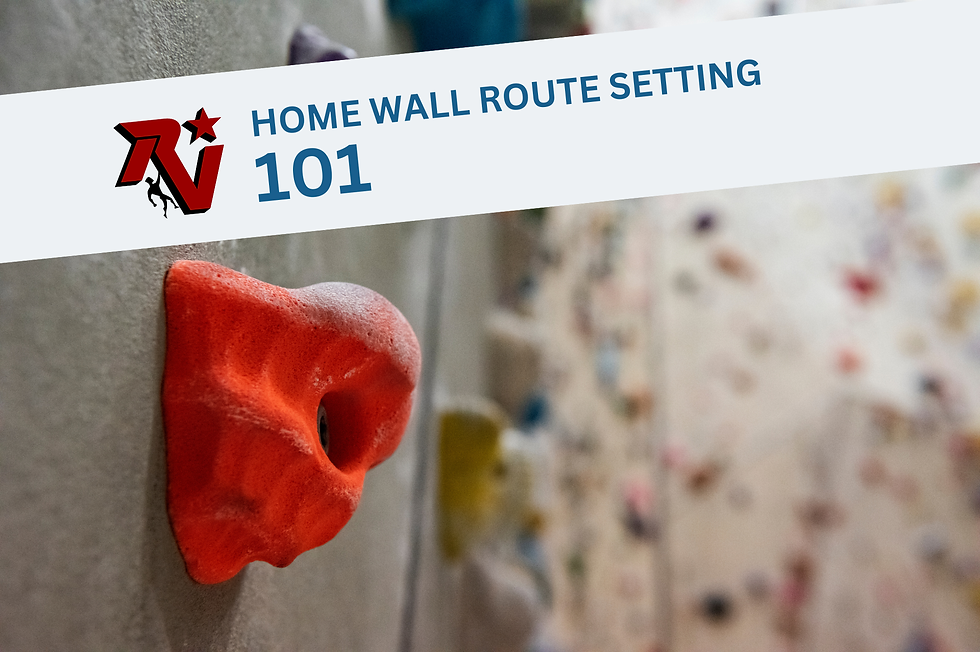Climbing Endurance Training: Essential Knowledge to Keep You Climbing for Longer
- Dovi Hirsch
- Oct 31, 2021
- 3 min read
by Christopher Schafenacker

Climbing endurance training is probably our sport’s most common—and most misunderstood—training modality. Most folks get it wrong—or at least not all the way right—and this has to do with a widely accepted but false dichotomy. You’ve probably heard some local crusher talk about strength days and endurance days. You, yourself, might even organize your climbing training according to this division. The fact is, however, that strength and endurance are (in large part) one and the same. No matter how many laps you run in the gym, you won’t stop pumping off your project until you get stronger. To understand why, it helps to brush up on basic knowledge of how muscles work.
Building Muscular Endurance
Muscles are composed of type I (slow-twitch) and type II (fast-twitch) fibers. Climbing depends principally on type II fibers, and yet no amount of climbing training will increase their number or proportion relative to type I fibers (this is a matter of genetics). Nevertheless, type II muscle fiber density can be improved, and this is crucial because strength is produced by muscle fiber contraction. If your individual muscle fibers are stronger, fewer will need to contract to produce a given amount of strength or perform a given move, which means more will be available for future moves. In other words, stronger muscles (denser type II fibers) mean greater endurance.
Strength training is not the only way to improve endurance, but it is the most important. If, say, you can pull all the moves on a route, but cannot string them together, the reason is that you have burnt out all your fibers on individual sequences and lack the necessary reserves to continue. Your strength has failed, not your cardio, capillarization, or any other factor frequently associated with avoiding pump. Overcoming this barrier means doing some hard pulling on your home woody—not running endless laps in the gym, then.
The above notwithstanding, there is room in climbing endurance training for more than just strength workouts. Improved aerobic and anaerobic capacities will also help you hold on for longer by improving your lactate threshold and lactic acid tolerance, respectively. The former means you will start to feel the burn later, while the latter means you will tolerate it better when it arrives. Both of these abilities, just like strength, are easily trained on a simple home setup.
To gain aerobic capacity, set jugs in an X-pattern across your home wall, pull moderate moves for a minute followed by a minute of rest and repeat ten times. To gain anaerobic capacity, a classic 4x4 climbing workout will do. Alternatively, 7/3 repeaters on a hangboard will also improve this ability.
Climbing endurance training that centers on aerobic and anaerobic abilities is more fun than those centered on strength. You can climb for longer, you fail less, and you gain the satisfying sensation of having put your body through the wringer. Nonetheless, all the lactate threshold and lactic acid tolerance gains in the world won’t matter if you can’t pull a move, which is why no matter how tempting, strength training needs to remain the core of your program.
Featured Climbing Training Gear
*NEW* The Rocketeer Wall: our free-standing adjustable solution for those who can’t mount a hangboard anywhere in their home or apartment—or who are limited on space. The Rocketeer gives climbers the additional option to set specific climbing holds. Recreate the crux holds of your proj and get ready to send, bruh.
The Rocket Wall: Available in 6’ and 8’ widths, it’s been tough for us to keep up with the demand for this innovative home climbing wall solution. Slightly overhanging, the Rocket Wall is big enough to set routes on, or to build a systems board.
The Rock-Stah: Our handcrafted version of a traditional hangboard, with curving crimp rails to help alleviate unnecessary strain on your pulleys. Because ain’t no one got time for a finger injury…










Comments